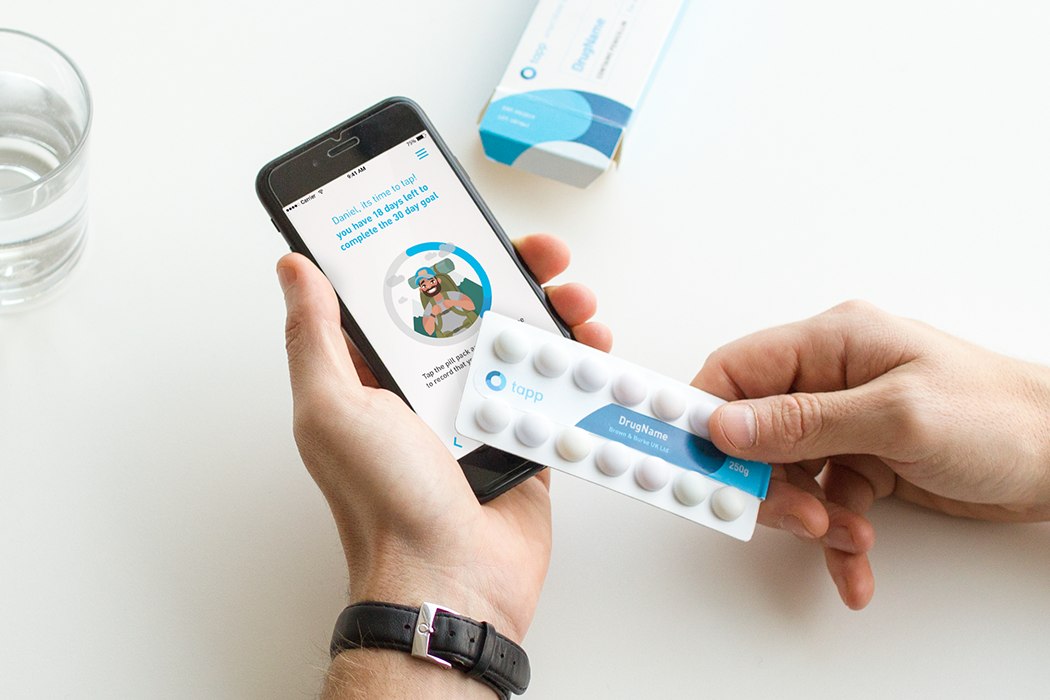
My parents need to take their insulin pills before every meal and the fool-proof system that they have devised is, to keep the tablets on the dining table. The second back-up plan is the house-help, who is supposed to remind them.
Needless to say, both are not idiot-proof solutions and on several occasions, they both forget to pop the pills. Design Thinking being a solution-provider for everything, the team at Cambridge Consultants have come up with an innovative solution.
They have designed an electronic strip called Tapp, that uses NFC technology to transfer the medicine’s data (stored on the blister pack) to a dedicated Tapp App. From the App, the user can select the reminder times and integrate other essential information of the prescription.
Goals can be set, and reminders can be defined – the idea of this combination is to ensure you take your correct dosage on time. And, that your medicine records be updated and handy.
Designer: Cambridge Consultants
“One of the biggest challenges facing society is the prevalence of chronic diseases. Many patients do not adhere to their medication regime correctly, resulting in poor outcomes and unnecessary costs,” Cambridge Consultants told Yanko Design.
“Non-adherence has many contributing factors; forgetfulness, procrastination and anxiety all play their part. Our current approach to non-adherence doesn’t seem to be working. For a solution to this challenge, perhaps we need to look to recent technological ‘intelligent’ advancements to nudge patient’s behaviors in the right direction.”
“Our team worked closely with a leading behavioral scientist to define a feature set that could offer long-term engagement with a patient. The behavioral change features are based on habit formation, goal reinforcement and social motivation. All features went through multiple iterations with user input, allowing us to refine our approach.”
“Tapp merges printed electronics and NFC technology into a simple, flexible sticker that can be applied to a standard blister pack. Our team developed fully functional proof-of-principle prototypes.”
“An innovative flexible aerial was needed to transmit the data from the smart blister to the user’s phone. Several aerial designs were developed and tested to allow the simple tap interaction to record a dose had been removed from the smart blister.”
“The design is a low-cost sticker with integrated flexible electronics and passive NFC used in conjunction with an app, specifically designed to address the key tenants of behavioral change; habit formation, goal reinforcement and social motivation.”
“The tapp sticker is added to a patient’s drug blister pack and the app is downloaded. The app allows patient to create and visualise goals. Then, provides digital nudges to take medication removing the cognitive burden of their therapy. When a patient takes their medication, a track is broken on the printed circuit. Using a simple tap interaction, patients can record that they have taken their medication and work towards their goals.”